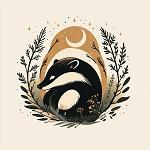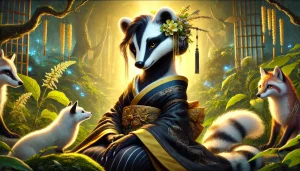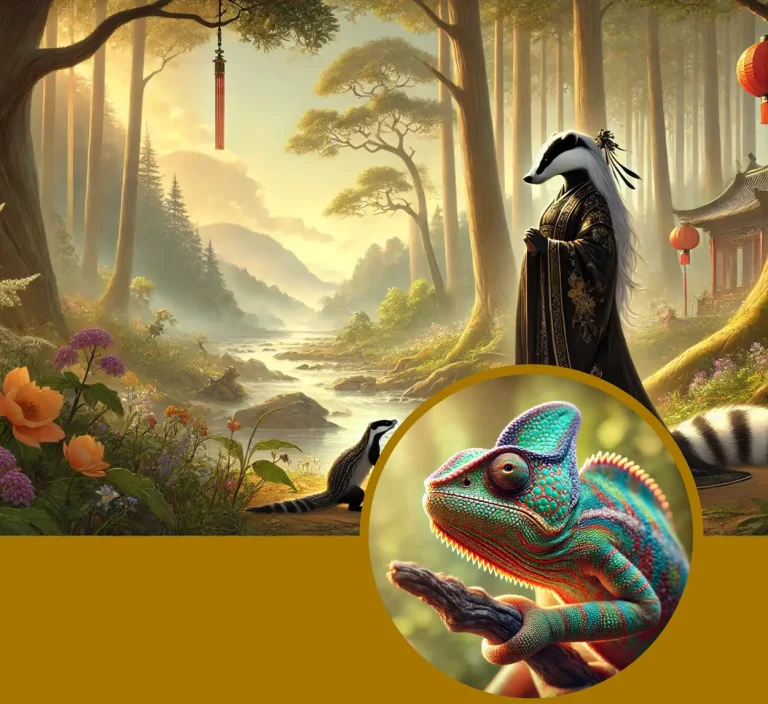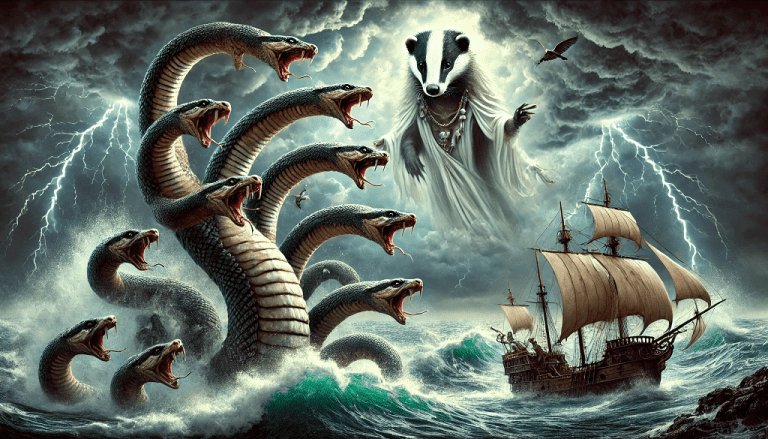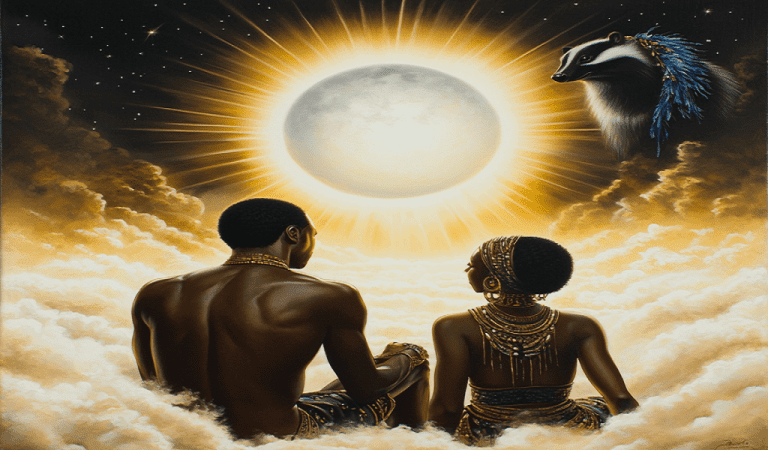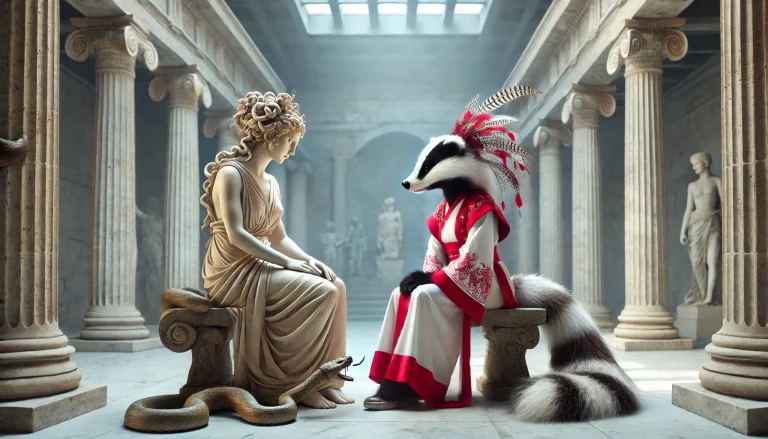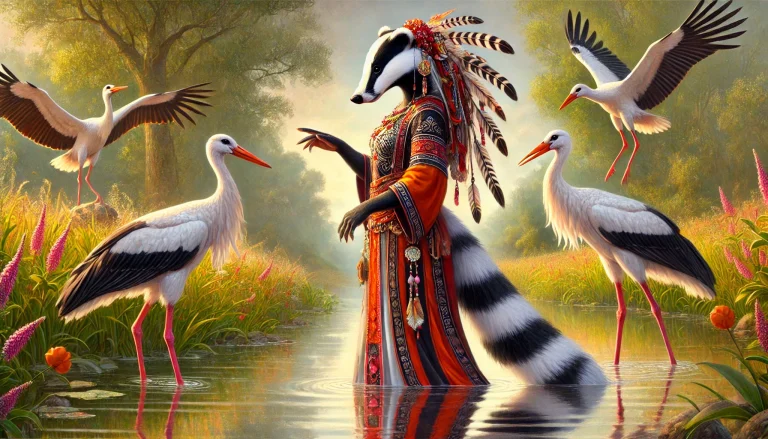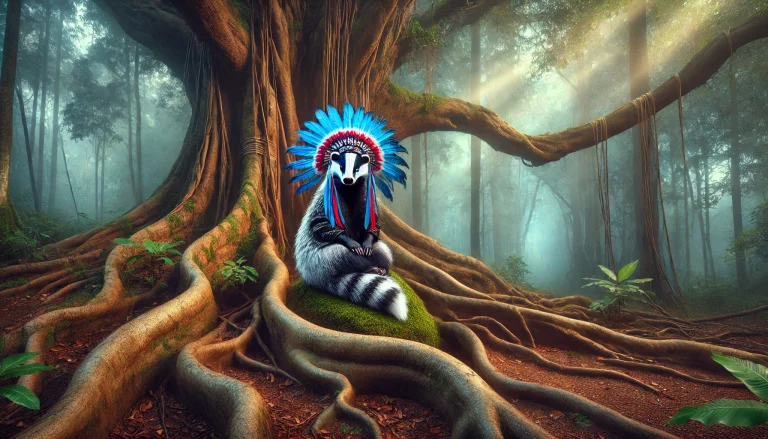The Magical Kingdom of Mythological Animals
In the blink of an eye, you find yourself at a mystical crossroads, where the boundaries between the real and the imaginary dissolve like the morning mist. On one side, a majestic griffin raises its golden wings against the sky; on the other, a feathered serpent glides through the air, dancing with the clouds. Welcome to the fascinating realm of mythological animals, where the impossible comes to life and imagination knows no bounds.
Since the dawn of civilization, when our ancestors gathered around campfires under starry skies, these extraordinary creatures have inhabited our stories, our dreams and our deepest fears. In every corner of the globe, from the glaciers of the North to the scorching sands of the desert, different cultures have created tapestries of legends filled with beings that defy our understanding of what is possible.
But what drives us, generation after generation, to create and perpetuate these stories? Why a Chinese dragon so different from its European cousin? How can a single being like the phoenix appear in so many cultures, each with its own interpretation of this immortal bird?
Imagine yourself for a moment walking through an ancient forest, where every shadow can hide a unicorn, every lake can harbor a sea serpent, and every cloud can be the disguise of a celestial dragon. What secrets do these creatures hold? What stories do they have to tell us?
On this journey through the extraordinary, we will explore not only the creatures themselves, but also what they reveal about ourselves: our fears, our hopes and our eternal search for magic in a world that sometimes seems to have lost its charm. Get ready to travel across centuries and continents, discovering how each mythological creature is a window onto a universe of possibilities.
Index
The Essence of the Extraordinary
In the folds of time and in the most remote corners of the human imagination, beings have been born that defy all logic and reason. Creatures that fly without wings, breathe fire without burning and change like the moon in its phases. They are mythological animals: living paintings made with the colors of fantasy and the brushes of dreams.
Imagine a divine artist, in his heavenly studio, deciding to play with creation: what if we combined the nobility of the lion with the insight of the eagle? What if we gave a horse the purity of the moon in the form of a horn? What if a snake could dance among the stars, covered in rainbow feathers? This is how griffins, unicorns and quetzalcoatls were born - each one an answer to an ancestral "what if?".
But these beings are more than just fantasies. They are magical mirrors in which civilizations have contemplated their own reflections over the millennia. When the ancient Greeks spoke of the multi-headed hydra, they weren't just telling a monster story - they were expressing how life's problems sometimes seem to multiply when we try to solve them. When the Chinese described their dragons dancing among the clouds and bringing rain, they were trying to understand the forces of nature through a lens that their hearts could reach.
In each culture, these fantastic beings fulfilled sacred roles. They were guardians of ancient secrets, messengers between the worlds of gods and men, symbols of virtues to be achieved or vices to be avoided. Some, like the phoenix, taught about rebirth and hope. Others, like the kraken of the deep, reminded us of the dangers of the unknown and the importance of respecting the mysteries of the world.
These immortal teachers continue to teach us lessons about courage, wisdom, fear and love. In their impossible forms and extraordinary powers, we find reflections of our own abilities to transcend limits, to dream beyond the possible, to create beauty out of chaos. Get ready for an adventure across centuries and continents, where every creature you meet will be a window onto new worlds of possibilities.
The Bestiary of Civilizations
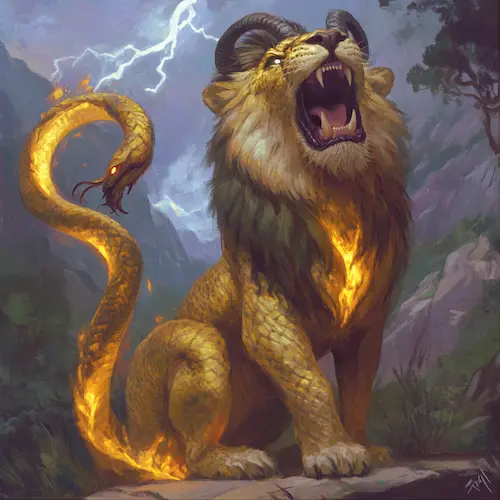
On the Roads of Ancient Greece
Among olive trees and marble columns, Ancient Greece gave us some of the most extraordinary mythical creatures ever imagined. The Phoenixeternally reborn from its own ashes, echoes the words of Herodotus in his History and continues to inspire modern artists, such as Stravinsky in his suite The Firebird. The Chimerawith its threefold nature - lion in the front, goat in the middle and serpent in the tail - appears majestically in the verses of the Iliad of Homer, immortalized on countless ancient vases and mosaics.
Pegasusthe winged horse born of Medusa's blood, gallops through the verses of Pindar and Hesiod, his story intertwined with that of the hero Bellerophon. Today, its image still flies high, from the TriStar Pictures logo to the pages of Percy Jackson and the Olympiansby Rick Riordan.
Through the Halls of Asgard
In the frozen lands of the north, where mead flows like rivers in ancient sagas, we find creatures of unimaginable power. Fenrirthe giant wolf destined to devour the sun, roars through the pages of the Edda in Prose by Snorri Sturluson. His brother, Jörmungandrthe serpent that encircles the world, slithers through the verses of the Poetic Eddatheir scales reflecting the cold waters of the fjords.
Huginn and MuninnThe ravens of the god Odin, whose names mean "Thought" and "Memory", fly through the Norse sagas and continue to inspire contemporary works such as American Godsby Neil Gaiman, and the song Huginn og Muninnby folk metal band Corvus Corax.
In the Kingdom of the Pharaohs
Under the scorching Egyptian sun, the Sphinx its enigmas, eternalized not only in the Great Sphinx of Giza, but also in the hieroglyphs of the Book of the Dead. The Bennu birdthe forerunner of the Greek Phoenix, gliding through the texts of the pyramids, its song echoing off the walls of ancient temples.
AmmitThe "Devourer of Souls", with the body of a hippopotamus, the mane of a lion and the jaws of a crocodile, awaits at the Book of the Dead to judge impure hearts, his terrifying image preserved in papyri exhibited in the British Museum.
In the Mists of the East
Eastern dragons roam the skies of Asia, so different from their Western cousins. In Classic of the Mountains and Seas Chinese, they are described as benevolent and wise beings. The Qilingentle as a spring breeze, appears in the Romance of the Three Kingdoms as an omen of prosperous times. The Tengufrom the Japanese mountains and immortalized in the Konjaku MonogatarishūThey protect the temples and teach martial arts to worthy mortals.
In the Soul of Brazil
In our tropical lands, the Boitatá winds in flames through the pages of The Saciby Monteiro Lobato, and in the songs of Milton Nascimento, such as Fire Snake. The Curupirawith his feet turned backwards, protects our forests in the stories collected by Câmara Cascudo in Geography of Brazilian Myths and takes on a new life in the series Invisible Cityby Netflix.
The Saci-Pererê, eternalized by Monteiro Lobato in his book of the same name, swirls through Brazilian culture, from the comic strips of Maurício de Sousa to the songs of Dorival Caymmi, such as The Saci. His mischievous figure also shines in the Sítio do Picapau Amareloand enchanted generations of Brazilians with his adventures.
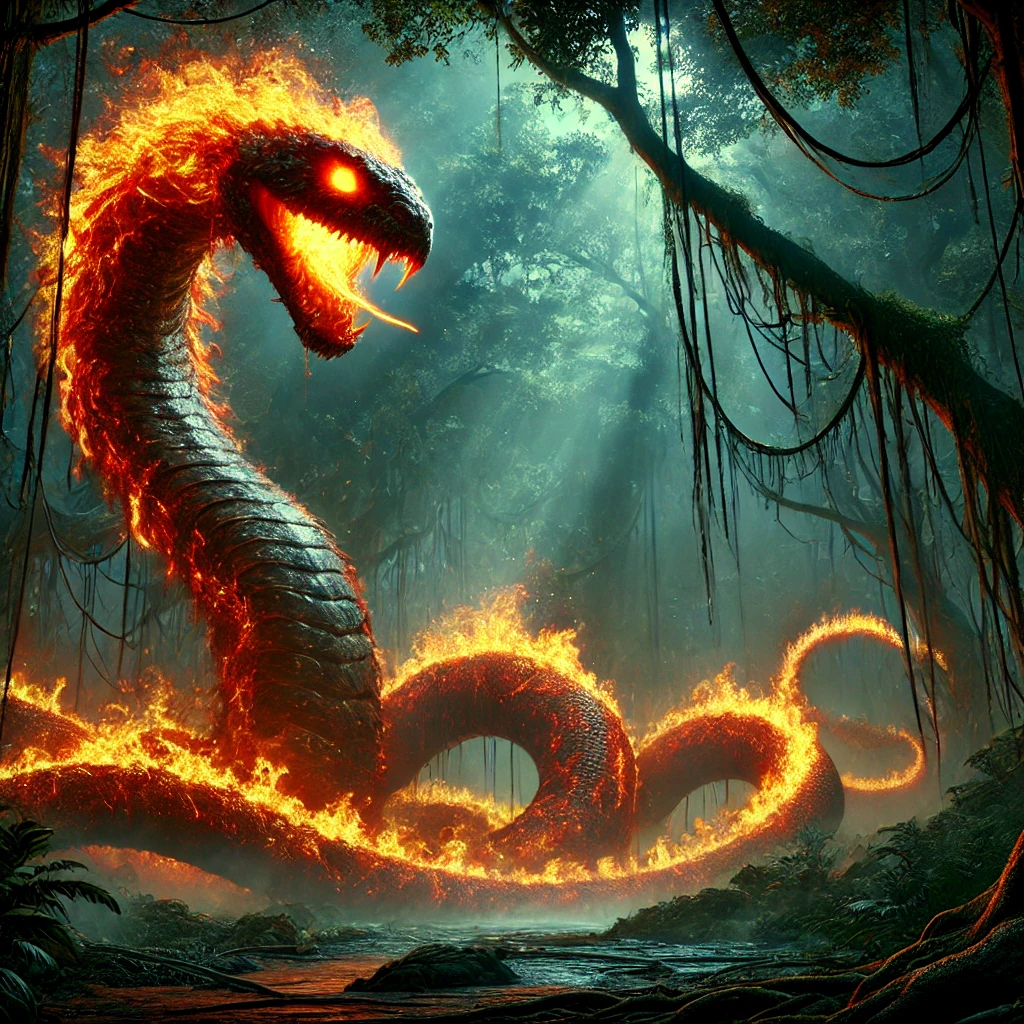
Echoes Across Continents: When Myths Meet
Like silk threads in a universal tapestry, certain mythical creatures seem to cross cultural boundaries, taking on different forms but preserving a common essence. The dragonsPerhaps the most notable of these mystical travelers, they tell drastically different stories in each land where they land. In the East, they are seen as celestial beings of wisdom and benevolence, bringing rain and prosperity. Usually without wings, but with the power to fly through magic, they appear in texts such as the Classic of the Mountains and Seas. In the West, portrayed in works such as Beowulf and in the Arthurian sagas, dragons are fearsome, winged, fire-breathing creatures, guardians of treasure and adversaries of heroes.
The Phoenix also finds surprising echoes around the globe. In Egypt, it appears as BennuA sacred bird associated with the rebirth of the Nile. In China, it appears as FenghuangIt is a symbol of harmony and virtue. Among the Native American peoples, it takes the form of Thunderbird, which brings thunder and storms, while in Russia, the Bird of Fire (Жар-птица) lights up the nights of Slavic stories, its golden feathers shining like the sun. In each version, the Phoenix carries the same universal message of rebirth and eternal hope.
Giant aquatic creatures also permeate cultures all over the world, reflecting the mystery and power of the depths. O Kraken Nordic, monstrous and terrifying, finds parallels in the Leviathan Hebrew Jörmungandr Viking and even Boitatá that winds its way through the waters in flames. In the fresh waters, other mythical figures appear, such as the Boiúna of the Amazon, the legendary Nessie of the Scottish Highlands and the dragons of the Chinese rivers, all bringing out the fascination and respect for the submerged kingdoms.
The guardians of nature also share surprising similarities. O Curupira Brazilian, with his feet turned back, protects the forests and punishes those who abuse them. It echoes in the Leshy Slavic, a spirit of the forests that confuses travelers, and in the Kodama Japanese, spirits that inhabit ancient trees, symbolizing the voice of nature and the need to respect it.
Even the divine messengers across cultures. Huginn and MuninnThe ravens of Odin, guardians of thought and memory, dialog with the hummingbirds from Aztec cultures, which carry messages between worlds. In Hindu mythology, birds GarudaVishnu's mounts also serve as a sacred bridge between the divine and the earthly.
Get ready to explore the connections that transcend centuries and continents, discovering how each mythical creature is a window onto new worlds of possibilities.
The Secret Language of Mythical Beings
In the great book of mythology, each creature is a living symbol, a breathing metaphor, a dream that has gained wings, claws or scales. They are animated hieroglyphs that tell us stories about the world and about ourselves.
Guardians of the Sacred Portals
On the borders between the known and the mysterious, we find the eternal guardians. The griffinmajestic in its duality of eagle and lion, it combines the keen vision of the heavens with the indomitable strength of the earth, protecting both material and spiritual treasures. The sphinxwith its human face and leonine body, guards not only temples, but also enigmas and ancient wisdom - its enigmas are portals to deeper knowledge, accessible only to those who dare to unravel their meaning.
Masters of Transformation
The Phoenix is perhaps the most eloquent teacher of transformation. In its flames, there is no end, only a new beginning; in its ashes, not death, but renewal. Bennu Egypt, rising from the primordial waters every morning, teaches us that every dawn is a chance for rebirth. They are messengers of hopeIt reminds us that from the darkest ashes can come the brightest light.
Heralds of Primordial Chaos
In the depths of Norse mythology, Fenrir is not just a giant wolf - it is the personification of inevitable chaos. Its howls echo indomitable forces, reminding us of our mortality and the fragility of order. JörmungandrThe serpent that encircles the world symbolizes the chaos that surrounds order, the end that contains the beginning - a reminder that destruction and creation are sides of the same coin.
Masters of Ancestral Wisdom
Oriental dragons glide through the sky like thoughts through the mind, representing a wisdom that transcends time. They are not beasts to be tamed, but masters to be revered. The QilinIn his eyes is the promise of a future illuminated by virtue and knowledge.
The Dance of the Elements
Each mythical creature dances with the fundamental forces of nature. The Boitatá Brazilian snakes in flames through the night, a spirit of fire that protects the forests. The nāgas Hindus glide between water and earth, guardians of rivers and fertility. The Thunderbirds Native Americans ride out the storms with eyes like lightning and wings like thunder. Salamanders of medieval alchemists dwell in the heart of fire, while the sylphs They float in the air, like thoughts drifting on the wind.
This dance with the elements is no coincidence - is a reflection of how our ancestors understood the natural world. Each mythical creature is a bridge between the tangible and the ethereal, between the world we can touch and the one we can only imagine. They are ambassadors of the extraordinaryIt reminds us that nature, in its deepest essence, is more magical than any myth we can create.
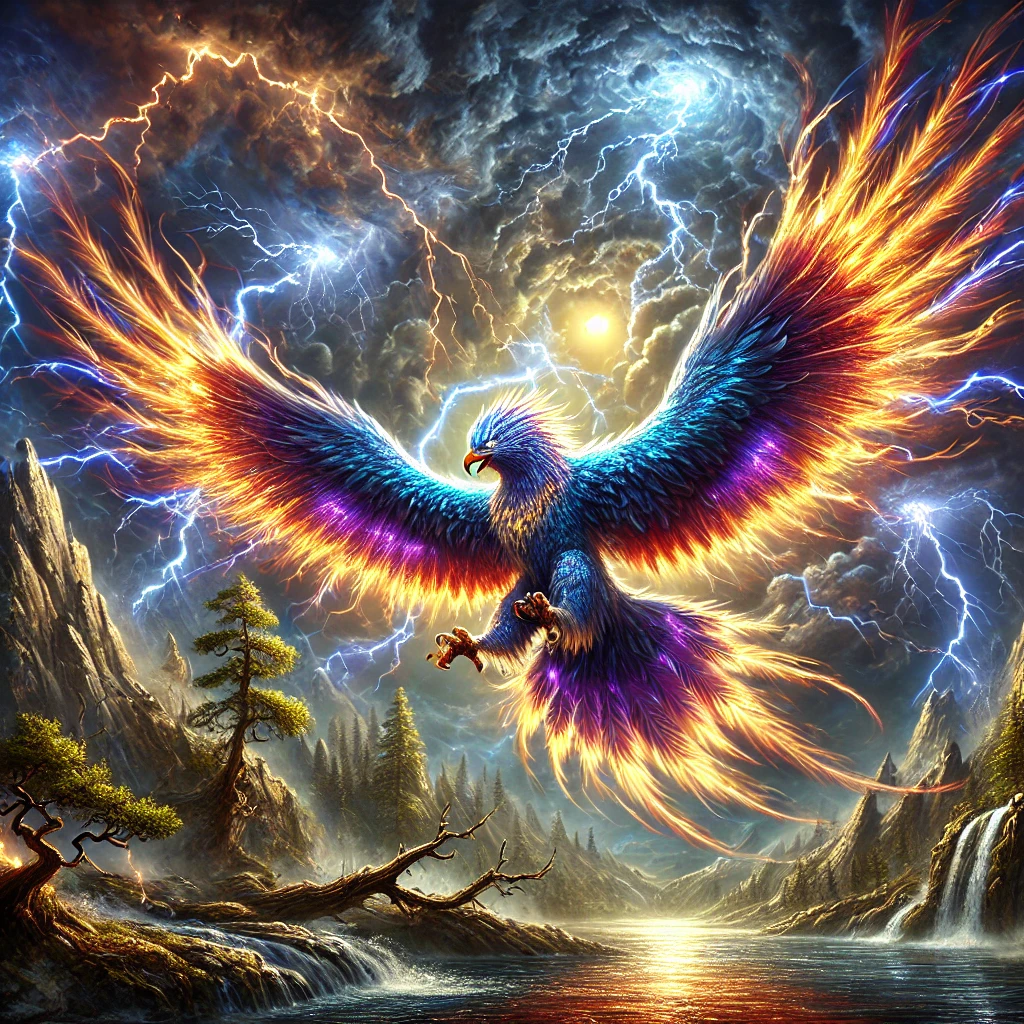
Immortals in the Digital Age: Myths Reinvent Themselves
In today's world, mythical creatures have not only survived - they've also survived. they prosperedadapting to new media and resonating with generations of digital dreamers. From ancient pages to modern pixels, these beings continue to enchant and amaze, proving that the extraordinary is eternal.
From Pages to Screens
In modern literature, dragons have been given a new lease of life. In The Hobbitby J.R.R. Tolkien, Smaug redefined the archetype of the dragon as not only powerful, but also intelligent and cunning. In The Chronicles of Ice and Fire, from George R.R. Martin, Daenerys Targaryen's dragons symbolize the rebirth of an ancient power in a skeptical world - a theme amplified by the adaptation Game of Thronesby HBO.
The Phoenix found a new nest at Hogwarts, in the form of FawkesDumbledore's loyal companion in Harry Potter. J.K. Rowling transformed this mythical being into a symbol of rebirth and unconditional loyalty. In The Chronicles of Narnia, from C.S. LewisIn this way, creatures such as centaurs and griffins gain spiritual dimensions, reinforcing the connection between magic and morality.
In the Realm of Games and Comics
Electronic games have become a new Olympus for mythical beings. In The Witcherbased on the books by Andrzej Sapkowskicreatures from Slavic folklore are given detailed and complex representations, mixing fantasy and realism. Monster Hunter transformed the hunt for mythical beings into a global cooperative experience, while God of War has reimagined the creatures of Norse mythology for a new generation of gamers.
In the comics, Sandmanby Neil Gaiman, weaves mythical creatures from different cultures into a modern tapestry of dreams and stories. The Fablesby Bill Willingham, brought legendary beings into the contemporary world, challenging them to navigate modern problems without losing their magical essence.
Modern mirrors
Contemporary reinterpretations of these beings often reflect our own struggles and issues. The dragons of How to Train Your Dragon have become metaphors for prejudice and mutual understanding, showing that even "monsters" can be understood. In The Last Unicornby Peter S. Beagle, the unicorn symbolizes purity in an increasingly ambiguous and morally complex world.
Games like Final Fantasy e Dragon Age use mythical creatures to explore themes such as environmental conservation, prejudice and political power, while Pokémon adapts ancient myths into accessible forms for a generation growing up connected to the digital world.
In Brazilian culture, productions such as Invisible Cityfrom Netflix, have brought figures such as Curupira and Saci into the contemporary urban context, exploring issues of environmental preservation, cultural identity and the impact of modernity on ancestral traditions. Another notable example is Parintins FestivalThis is a vibrant celebration which, as well as preserving and exalting indigenous culture, also highlights Brazil's mythological animals. Characters such as the Boi-Bumbá - represented by the oxen Garantido and Caprichoso - come to life in grandiose spectacles, reinforcing the symbolic richness of national legends and the connection with the natural elements that inspired these stories.
Secrets and Discoveries: What You Didn't Know About Mythological Animals
From Bones to Legends
Many of the most famous myths may have their roots in discoveries that our ancestors were unable to explain. The huge mammoth skulls found by the ancient Greeks may have inspired the myth of the Cyclops - the large central hole in the skull, actually the trunk cavity, appeared to be the space for a single giant eye. The fossils of protoceratopsThe myth of the griffin, with its curved beak and quadruped body, was possibly originated by merchants along the Silk Road.
The dragonsDragons, which are present in many cultures, can also have multiple natural origins. In China, huge dinosaur fossils helped shape the image of the oriental dragon. In Indonesia, the Komodo varans, with their impressive size and poisonous saliva, have brought to life creatures that seem straight out of fantastic tales.
Shadow creatures
Not all mythical creatures have achieved the fame of dragons or unicorns. Some inhabit the darkest corners of folklore:
- The Wolpertingeris an unlikely hybrid with the body of a hare, the wings of a pheasant, the fangs of a fox and the antlers of a deer.
- TapanuThe Polynesian fish is a giant fish with turtle shells and fins that resemble bat wings.
- The ChupacabraThe first myth, which emerged in the 1990s, quickly spread through Latin American folklore, showing how new myths can be born even in the modern age.
- BunyipIn the Australian Aboriginal myths, it is described in so many different ways that scholars believe it is a term for various mystical creatures of the waters.
Surprising facts
- The Kraken may have been inspired by sightings of giant squid, which can measure up to 13 meters. Sailors' reports of tentacles emerging from the depths are not as exaggerated as they may seem.
- Unicorns may have their origins in misinterpreted descriptions of Indian rhinos by inexperienced travelers. Marco Polo, on seeing a rhinoceros in Java, associated it with the unicorn of legend, although he was disappointed that it was not as majestic as he had expected.
- The Hairyfrom medieval French folklore, was described as immune to weapons, except in his belly - a vulnerability curiously similar to Smaug's weak points in The Hobbit and other dragons from modern literature.
The Universality of Myths
- The PhoenixThe Fenghuang, associated with the sun and rebirth, appears in cultures as diverse as ancient Egypt and imperial China. In Egypt, Bennu was seen as the soul of the god Ra, while in China, the Fenghuang was an omen of important events for the empire.
- The Basiliskfamous for his role in Harry PotterThe legend of the king cobra has its origins in Pliny the Elder, who described it as a small snake with a crown on its head, capable of killing with its gaze. This legend may have arisen from exaggerated accounts of the king cobra.
- The Hippogriffcreated by the poet Ludovico Ariosto in the poem Orlando Furioso, was born as a literary joke - the son of a griffin and a mare, it represented something more improbable than "when pigs fly".
These stories prove that the extraordinary often arises from the encounter between the inexplicable and the human imagination. From fossilized bones to observations of real animals, mythological creatures are a reflection of humanity's tireless quest to understand the unknown - and to create magic from it.
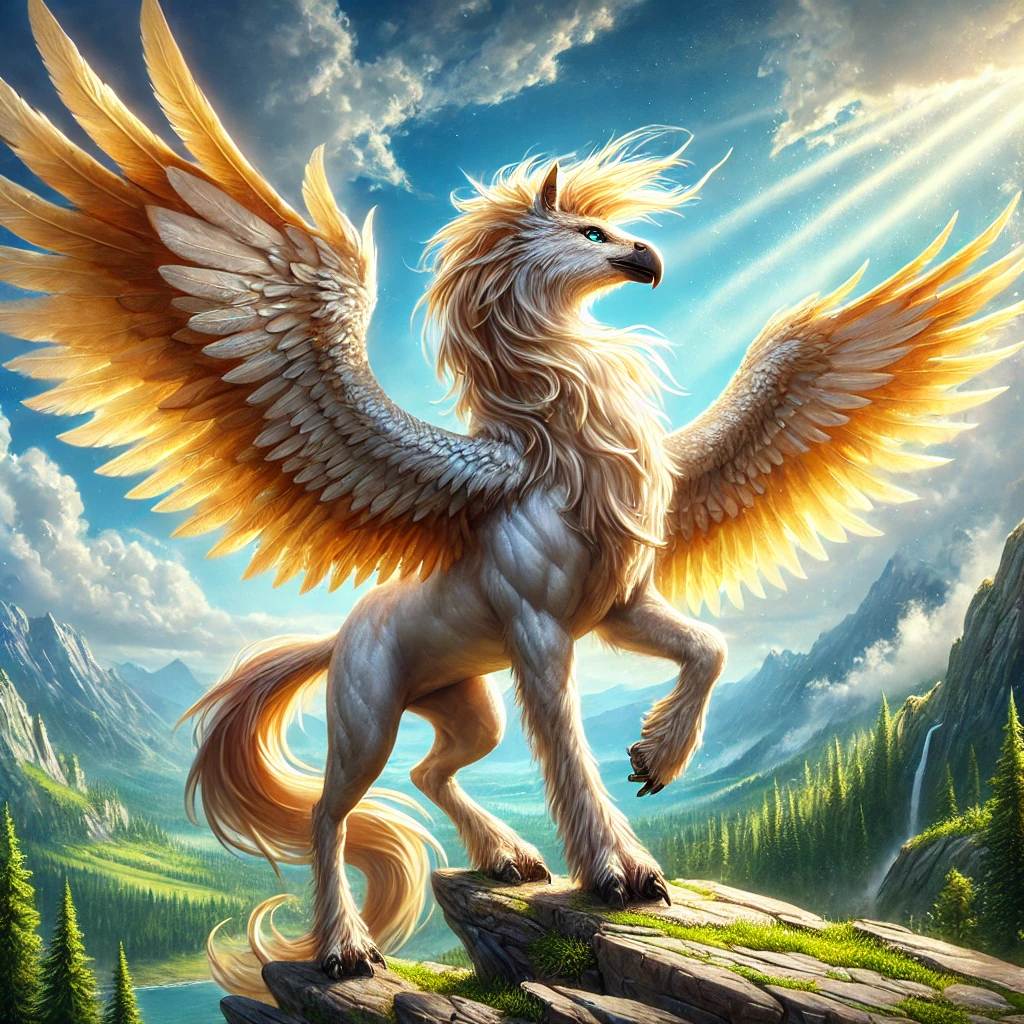
The Eternal Echo of Myths
At the end of our journey through the realm of mythological animals, we realize that these extraordinary creatures are much more than mere fantasies of ancient civilizations. They are reflections of our own humanity, mirrors of our fears, dreams and aspirations. From the depths of the oceans to the highest mountain peaks, from primeval forests to scorching deserts, these beings continue to inhabit our collective imagination, as alive today as they were millennia ago.
In every dragon that flies across the skies of our modern stories, in every phoenix that is reborn in new interpretations, we find echoes of the same fundamental questions that our ancestors facedOur relationship with nature, the search for transformation and rebirth, the struggle between order and chaos, and the hope for transcendence.
For Those Who Want to Venture Further
If you want to explore this fascinating realm in more depth, there are many ways to go:
For avid readers:
- The Book of Imaginary Beingsby Jorge Luis Borges is a fascinating compendium of mythical creatures from all over the world.
- Mythology: Gods, Heroes and Monstersby Donna Jo Napoli, presents a comprehensive overview of global myths.
- Geography of Brazilian Mythsby Câmara Cascudo, delves into our own legends and traditions.
For Visual Lovers:
- The British Museumin London, houses one of the largest collections of mythological artifacts in the world.
- The National Museum of Anthropologyin Mexico, offers an immersion in Mesoamerican mythical creatures.
- The Folklore Museumin São Paulo, offers an intimate look at Brazilian legends and creatures.
On Screen:
- The documentary series Mythical Beasts, from the History Channel, explores the origins and meanings of legendary creatures.
- Jim Henson's Creatures reveals how myths inspire the creation of new fantastic beings.
- Documentaries such as Dragons: A Fantasy Made Real, from the BBC, investigate the scientific basis behind the legends.
An Invitation to the Imagination
In an increasingly technological and seemingly disenchanted world, these creatures remind us that there is still room for wonder and mystery. They invite us to look beyond the veil of the ordinary and glimpse the infinite possibilities that inhabit the corners of our imagination.
Because, in the end, mythological animals are more than just stories - they're stories. are guardians of our ability to dream, to create, to transcend the limits of what is possible. In their wings, claws, scales and mysteries, they carry not only the stories of the past, but also the seeds of dreams yet to come.
May your own explorations into the realm of the mythical and the marvelous be as rich as the stories we share here. After all, as long as there are eyes to see beyond the visible and hearts to dream beyond the possible, mythological animals will live on - dancing on the borders between the real and the imaginary, between the known and the mystery, between what we are and what we can become.
Get ready for an adventure across centuries and continents, where every creature you meet will be a window into a new world of possibilities.
I'm passionate about magic and spirituality, always looking for new knowledge about rituals, energies and the mystical universe. Here, I share magical practices and spiritual tips for those who want to connect more deeply with themselves and the world around them, all in a light and accessible way.
